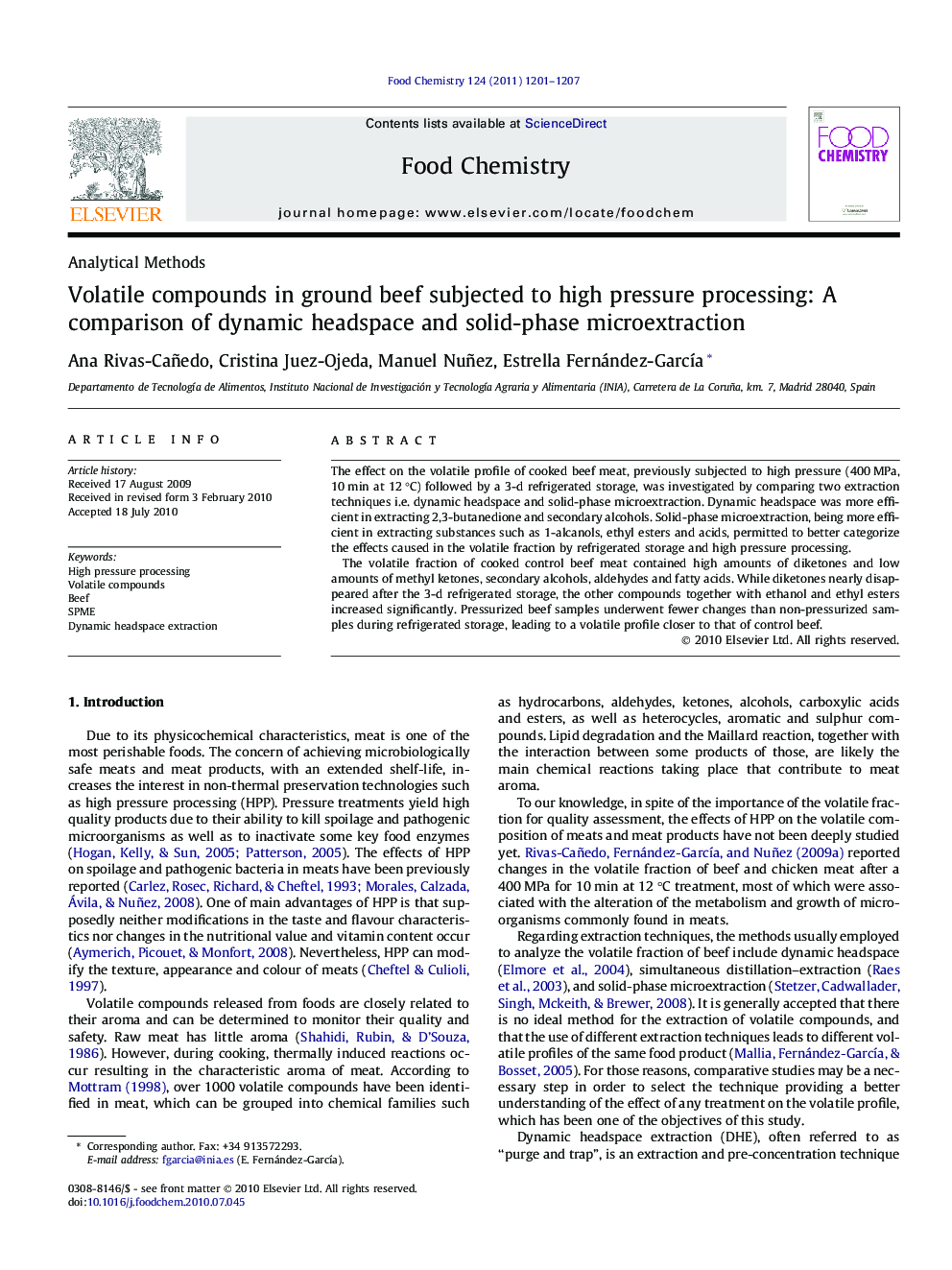| Article ID | Journal | Published Year | Pages | File Type |
|---|---|---|---|---|
| 1185728 | Food Chemistry | 2011 | 7 Pages |
The effect on the volatile profile of cooked beef meat, previously subjected to high pressure (400 MPa, 10 min at 12 °C) followed by a 3-d refrigerated storage, was investigated by comparing two extraction techniques i.e. dynamic headspace and solid-phase microextraction. Dynamic headspace was more efficient in extracting 2,3-butanedione and secondary alcohols. Solid-phase microextraction, being more efficient in extracting substances such as 1-alcanols, ethyl esters and acids, permitted to better categorize the effects caused in the volatile fraction by refrigerated storage and high pressure processing.The volatile fraction of cooked control beef meat contained high amounts of diketones and low amounts of methyl ketones, secondary alcohols, aldehydes and fatty acids. While diketones nearly disappeared after the 3-d refrigerated storage, the other compounds together with ethanol and ethyl esters increased significantly. Pressurized beef samples underwent fewer changes than non-pressurized samples during refrigerated storage, leading to a volatile profile closer to that of control beef.
